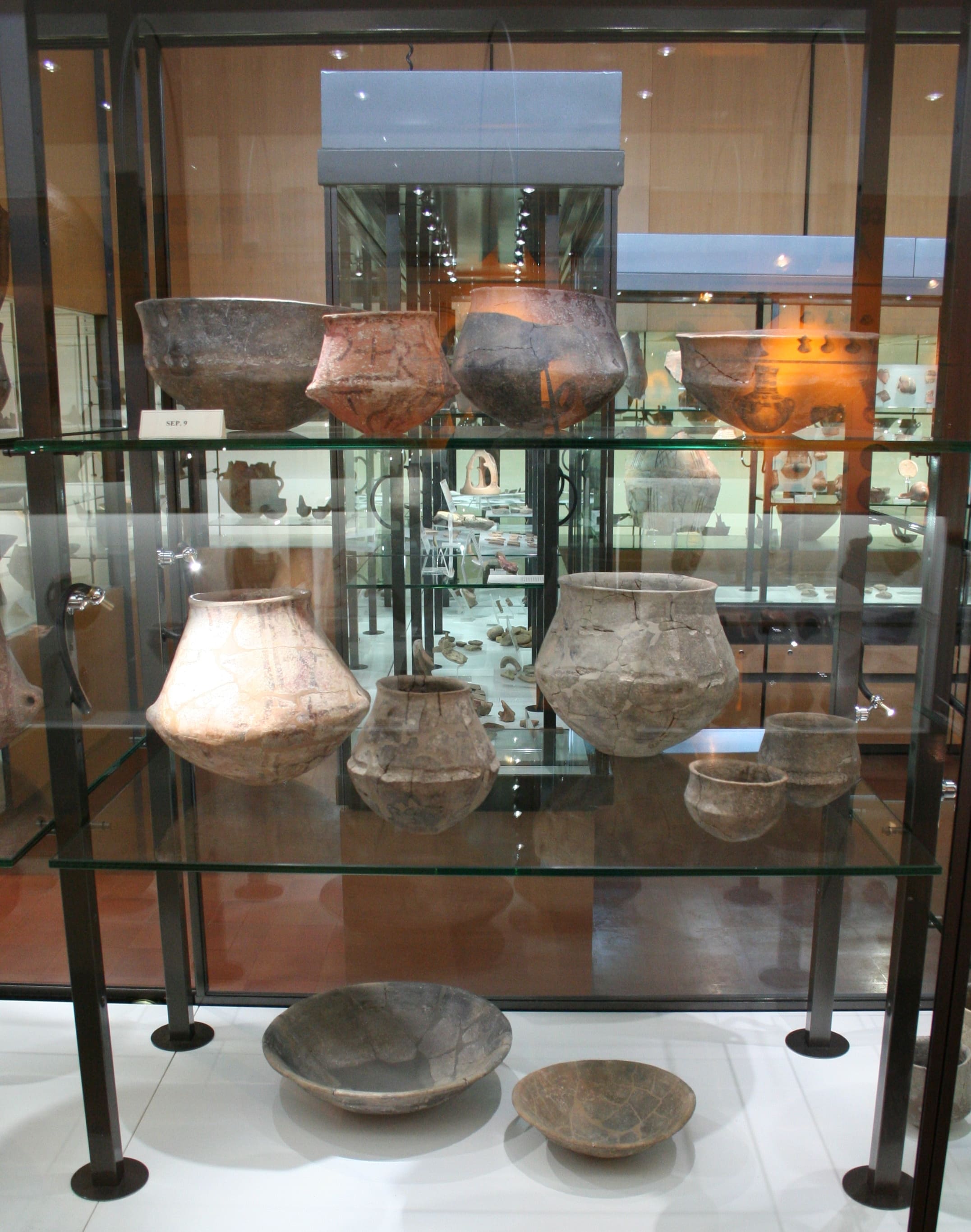The place
The first two rooms dedicated to the Agrigento area display finds dating back to prehistoric and protohistoric times in an ideal topographical itinerary that starts in the east of the province and reaches its westernmost extremities.
The first display case in the room contains prehistoric materials from the Civic Museum, followed by artifacts from the areas surrounding Palma di Montechiaro, where the two sites of Piano Vento and Monte Grande were identified and excavated. The former is characterized by a settlement with huts from the early and middle Neolithic periods, overlaid by a necropolis connected to another settlement from the Eneolithic period (4th-3rd millennium BC), which has yielded rich grave goods with multiple finds, including large plates from the culture known as San Cono - Piano Notaro - Grotta Zubbia; the second, with a large sanctuary from the Bronze Age (2nd millennium BC), probably linked to the production and export of sulfur. The discovery of Aegean ceramics alongside local ones suggests that the sanctuary was also frequented by non-native peoples. Of particular note from the site are a clay model of a temple with four poles or anthropomorphic idols, ceramics in the Castelluccio style, and a brassard, a typical plate used by archers to protect their wrists (see 87).
On the south wall of the hall, educational panels illustrate the periods of Sicilian prehistory and protohistory in a chronological overview that reaches the Greek colonization, comparing strictly local evidence with the styles and archaeological evidence of the entire island.



